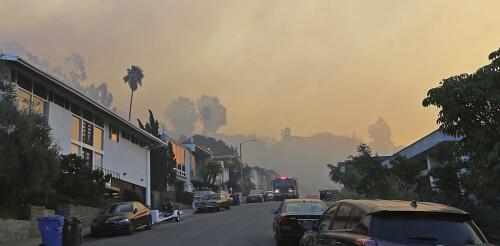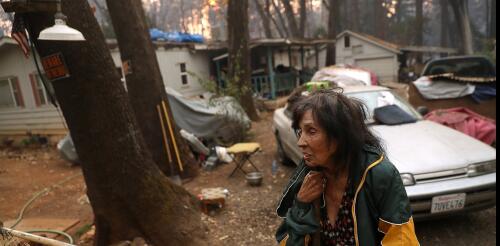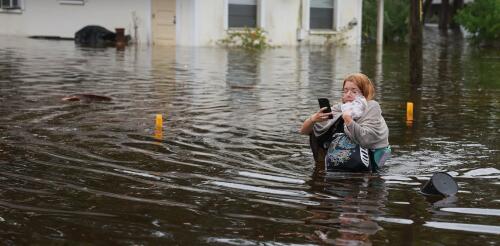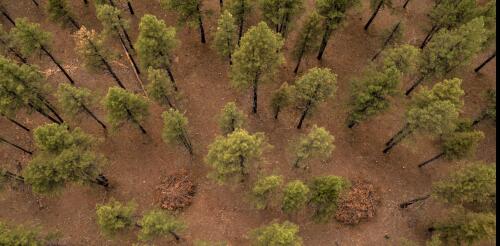US wildfires
Strong winds blew across mountain slopes after a record-setting warm, dry summer. Small fires began to blow up into huge conflagrations. Towns in crisis scrambled to escape as fires bore down. This could describe any number of recent events, in places as disparate as Colorado, California, Canada and Hawaii. But this fire disaster happened over 110 years ago in the Northern Rocky Mountains of Idaho and Montana. The “Big Burn” of 1910 still holds the record for the largest fire season in the Northern Rockies. Hundreds of fires burned over 3 million acres – roughly the size of Connecticut – most in just two days. The fires destroyed towns, killed 86 people and galvanized public policies committed to putting out every fire. Many residents of Wallace, Idaho, fled on trains ahead of the 1910 blaze. Volunteers who stayed saved part of the town, but about a third of it burned. R.H. McKay/U.S. Forest Service...
When wildfire smoke turns the air brown and hazy, you might think about heading indoors with the windows closed, running an air purifier or even wearing a mask. These are all good strategies to reduce exposure to the particles in wildfire smoke, but smoky air is also filled with potentially harmful gases. Those gases can get into buildings and remain in the walls and floors for weeks. Getting rid of these gases isn’t as simple as turning on an air purifier or opening a window on a clear day. In a new study published in the journal Science Advances, colleagues and I tracked the life of these gases in a home exposed to wildfire smoke. We also found that the best way to get rid of the risk is among the simplest: start cleaning. The challenge of smoke particles and gases In December 2021, several of my friends and colleagues were affected by the Marshall Fire that burned about 1,000 homes in Boulder County, Colorado. The “lucky” ones, whose homes were still stand...
As wildfires burn across the Western U.S., the people in harm’s way are increasingly those least able to protect their homes from fire risks, evacuate safely or recover after a fire. In a new study, we and a team of fellow wildfire scientists examined who lived within the perimeters of wildfires over the past two decades in Washington, Oregon and California – home to about 90% of Americans in the U.S. West exposed to wildfires over that period. Overall, nearly half a million people in California, Oregon and Washington were exposed to wildfires at some point during the past 22 years. Alarmingly, about half the people exposed to wildfires in Washington and Oregon were considered socially vulnerable. While the number of people exposed to fire rose overall, the number of socially vulnerable people exposed more than tripled between the first and second decades. How social vulnerability affects fire risk A variety of factors shape social vulnerability, including wealth,...
As questions loom over the Federal Emergency Management Agency’s ability to fund disaster recovery efforts, people whose homes were damaged or destroyed by recent wildfires and storms are trying to make their way through the difficult process of securing financial aid. Residents in communities hit by Hurricane Idalia, the Maui fires or other recent disasters have a long, tough journey ahead. Early estimates suggest Idalia caused US$12 billion to $20 billion in losses, primarily in property damage, acccording to Moody’s Analytics. And rebuilding Lahaina, Hawaii, has been forecast at over $5.5 billion. How well the initial disaster response meets residents’ needs has far-reaching consequences for community resilience, especially for vulnerable residents, as we saw after Hurricanes Katrina and Maria. I am a law professor who focuses on disaster recovery and preparedness and has created several legal clinics to assist survivors. Here’s what anyone facing lo...
The U.S. government is investing over US$7 billion in the coming years to try to manage the nation’s escalating wildfire crisis. That includes a commitment to treat at least 60 million acres in the next 10 years by expanding forest-thinning efforts and controlled burns. While that sounds like a lot – 60 million acres is about the size of Wyoming – it’s nowhere close to enough to treat every acre that needs it. So, where can taxpayers get the biggest bang for the buck? I’m a fire ecologist in Montana. In a new study, my colleagues and I mapped out where forest treatments can do the most to simultaneously protect communities – by preventing wildfires from turning into disasters – and also protect the forests and the climate we rely on, by keeping carbon out of the atmosphere and stored in healthy soils and trees. Wildfires are becoming more severe Forests and fires have always been intertwined in the West. Fires in dry conifer forests...




